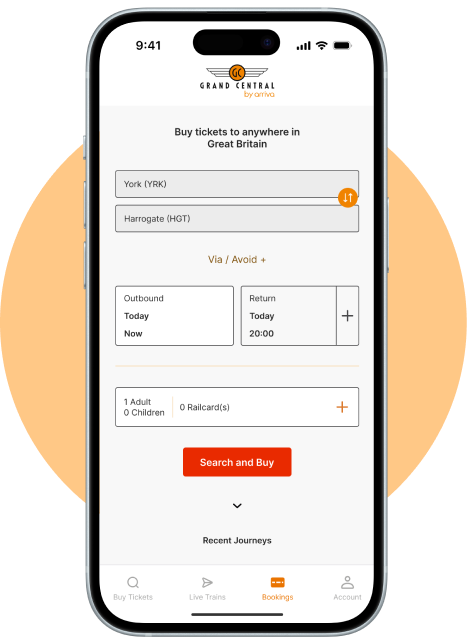We are experiencing hot weather across the UK this week, with the highest temperatures expected on Thursday. When rail track temperatures exceed a certain temperature, speed restrictions must be put in place to prevent the track from buckling.
This may cause delays and cancellations to journeys across the whole Gatwick Express, Great Northern, Southern and Thameslink networks until the end of the week.
Customer Advice:
Please check your journey before travelling over the next few days. The effects of the hot weather may impact services.
If your journey is essential - for example, you're going to be catching a flight, attending an important appointment or catching a long-distance train - we'd advise you to leave extra time for your journey.
How is this currently affecting the train service?
Due to the hot weather conditions, speed restrictions will be put in place at a number of locations across the network. These restrictions mainly affect trains on the mainline route between London Victoria / Blackfriars, East Croydon, Gatwick Airport and Brighton.
The restrictions will vary in impact - some of them will reduce train speeds considerably (for example, 20mph restrictions), but others are not so noticeable. However, we do expect a number of our trains to lose time between London and the South Coast.
Speed restrictions are currently in place in the below locations:
- London bound between West Hampstead and Kentish Town
- Bedford bound between Harlington and Flitwick
- Both directions between Shepherds Bush and Wembley Central
- Sutton loop services, in the area around Mitcham Junction
What should I do?
Please use an online journey planner before you start travelling.
Ensure you are well-hydrated and make sure you are carrying a bottle of water with you. To find out more about locations where you can refill a water bottle, please click here.
If you feel unwell, please leave the train at the nearest station and seek station staff for further assistance, or activate the station Help Point. Please avoid pulling the passenger alarm on the train if possible, as this will almost certainly delay getting assistance to you.
If you are on our longer-distance routes, trains are usually fitted with air conditioning. Should you believe this is not working, please send message on Twitter with the 5 or 6 digit carriage number which is printed at each end of the carriage. (This number is usually found to the right-hand side of the connection through to the adjacent carriage, and on the outside of the train under the windows) as the fault can then be investigated.
Why are speed restrictions necessary in very hot weather conditions?
Track temperatures can reach beyond 50C in direct sunlight during the summer months. If trains ran at normal speeds at some locations, it would put too much stress on the rails, which are already under pressure due to metal expansion in the hot weather.
This situation typically occurs in locations where intensive track maintenance is already needed, and new (or repaired) rails are in place. Each piece of rail is adjusted to accommodate as wide a range of temperatures as possible, but if the installation of the rails has recently occurred, various components may still be settling down and may be more prone to issues.
Network Rail are responsible for the maintenance and operation of railway tracks and associated equipment. They have specialist staff in place to monitor the temperatures of the rails and ensure the correct speed restrictions are applied.
What else happens to the railway during hot weather?
Although Network Rail engineers try to ensure that all infrastructure is weatherproof and durable, very hot temperatures can cause electronic and mechanical systems to experience unusual faults. For example, some signalling infrastructure contains components which can overheat.
Railway signalling is designed to be "failsafe" - if any problem occurs, it automatically restricts trains from running unless the track is proved to be clear. In practice, this means that any component issue - whether it's a problem with a computerised control system or a piece of cabling - can cause delays in the event of a failure.
Proactive maintenance is undertaken on a rolling basis throughout the whole year, but some failures are unpredictable and can only be addressed once they have occurred.
Check before you travel:
You can check your journey using the National Rail Enquiries real-time
Journey
Planner
Twitter:
If you would like to follow this incident on
Twitter, please use #GTRWeather
Compensation:
You may be entitled to
compensation if you
experience a delay in completing your journey today. Please keep your train
ticket and make a note of your journey, as both will be required to support any
claim.
Feedback:
We want to make information better - tell us how! Fill
out this online Disruption Survey.

